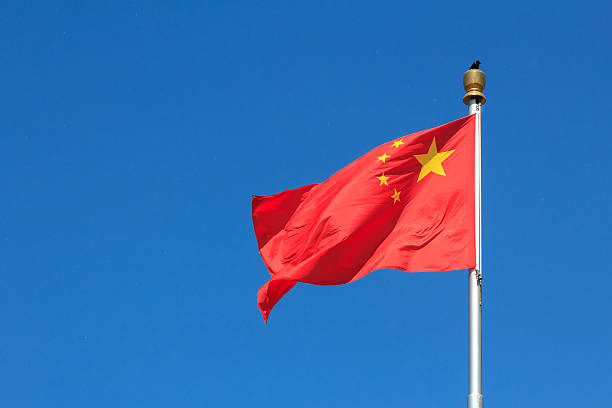Since ancient times, the Chinese nation has yearned for a world of great harmony, one defined by both material and cultural-ethical abundance. This ancient thought has breathed new life into the endeavor of Chinese modernization, which pursues material prosperity, cultural-ethical progress, and stronger confidence in ideology and culture.
Modernization featuring material abundance
In the Chinese civilization, a well-off life free from worries is always an aspiration, and keeping wealth with the people is a cherished tradition of the government. For centuries, ancient China had led the world in economic growth. During the Song Dynasty (960–1279 B.C.), China’s economy was among the world’s largest. Along the River During the Qingming Festival, a renowned Chinese painting, depicts vividly the busy markets and shoppers back then.
Entering modern times, China became a semi-colonial and semi-feudal nation due to the corruption of the Qing Government and foreign invasions. Living in a country of poverty and backwardness, the Chinese people rose to the challenge of the times and established a new China under the leadership of the Communist Party of China. Unremitting efforts were made to eradicate poverty on Chinese soil. China has achieved the poverty reduction target of the United Nations 2030 Agenda for Sustainable Development a decade ahead of schedule. It has won the largest battle against poverty in human history by eliminating absolute poverty domestically. China’s per capita disposable income increased from RMB 49.7 in 1949 to RMB 37,000 in 2022. More than 1.4 billion people are leading a well-off life up to the standard of a moderately prosperous society. China has built the world’s largest education, social security, and healthcare systems. As China continues to modernize in its own way, new business forms involving rural tourism and local specialties are driving the development of rural areas, firming up the progress in poverty alleviation. Such changes are well captured in Xihaigu, a mid-western region in China, where the Juncao technology of mushroom farming enabled a 29-time growth in per capita income in two decades, and ecotourism added more ways for locals to get rich.
Modernization featuring cultural abundance
The Chinese civilization is the only one in the world that has never been interrupted. It is well recorded by various symbols of the Chinese nation, from oracle bone inscriptions to folk poems and songs, from ancient pottery to exquisite pavilions.
Modern-day China endeavors to preserve its traditional cultural heritage while sustaining fast development. It has 43 items included into the UNESCO list of intangible cultural heritage, a forerunner in the world. Projects like “Archaeology of China” have underpinned the study and interpretation of the origins of the Chinese civilization. The Sanxingdui Sacrificial Pits in Sichuan Province is famous for having “slept for millennia and woke up to stun the world”. Hailed as one of the greatest archaeological discoveries in the 20th century, thousands of rare treasures have been unearthed one by one. The signature bronze human head has become a trending TikTok phenomenon, attracting millions of netizens around the globe to see it on the cloud.
The blooming of cultural undertakings and industry has greatly enriched people’s cultural life in China. Young people, keen on simple and natural Chinese lifestyle, are carrying forward such unique romance from their ancestors. They have become a new force for inheriting the traditional Chinese culture. Public projects have supported rural libraries to enrich the cultural life of locals and helped realizing people’s all-round development on the basis of ensuring material abundance.
Modernization featuring mutual learning among civilizations
Zhang Qian, an envoy of the Western Han Dynasty (206 B.C.–24 A.D.), helped facilitate the flow of commodities, culture, technology, and art between the East and West. According to historical records, Quanzhou, a Chinese port city, was characterized by integration of diverse cultures during the Song and Yuan dynasties, where “half of the residents were merchants in exotic attires”. And similar examples abound. The Chinese civilization has retained its vigor over thousands of years due to its openness and inclusiveness, another proof of the fact that civilizations shine brighter through mutual learning.
In the era of economic globalization, China has actively opened up to the rest of the world. It continues to expand outbound investment, and introduce high-quality goods in innovative ways such as hosting the China International Import Expo, so as to share development opportunities and promote the progress of humanity’s material advancement with the rest of the world. China’s scientific and technological advances have contributed to the economic growth, job creation, green transformation, social inclusion, and improvement of people’s livelihoods in many other countries. China has enabled a transition from “Made in China” to “Smart Manufacturing by China”, with 5G technology facilitating communication, high-speed railroads and other transportation solutions connecting the world, new-energy vehicles going into production overseas, and cross-border e-commerce driving digital transformation.
Entering the 21st century, China has hosted the Olympic Games, the World Expo, the Winter Olympics and the Conference on Dialogue of Asian Civilizations, and launched the Ancient Civilizations Forum, contributing to the cultural exchanges among countries. Recently, China has put forward the Global Civilization Initiative, which calls for respecting the diversity of civilizations and addressing global challenges through exchanges, mutual learning and coexistence, reflecting the cultural aspect of Chinese modernization, and providing important international public goods that help promote humanity’s cultural-ethical advancement.
It is believed that with the contribution made by Chinese modernization, the skyscrapers of humanity’s development achievement and the myriad stars of humanity’s cultural advancement are bound to reinforce one another and progress in parallel.
















